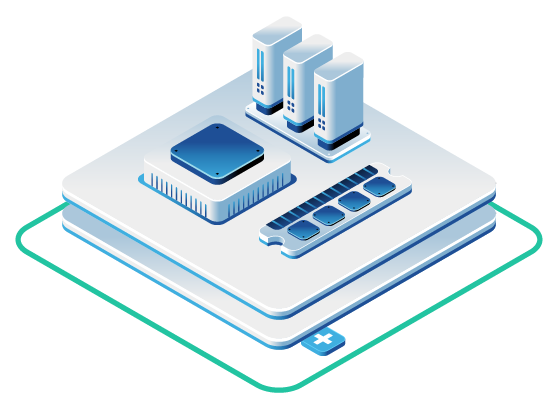In this article
- Understanding Cloud Exit Strategy
- Why You Need an Exit Strategy Now
- Evaluating Your Workloads for Migration
- Planning Your Exit Strategy
- Executing Your Migration
- Post-Migration Operations
- OpenMetal: Your Exit Strategy Partner
- Moving Forward
Public cloud transformed how businesses operate, promising unlimited scalability and pay-as-you-go flexibility. Yet many organizations now face an uncomfortable reality: monthly bills that spiral upward, unexpected egress fees that dwarf compute costs, and a nagging sense that control has slipped away.
If you’ve watched your cloud spend double while your workloads remained stable, you’re not alone. According to CIO.com, managing cloud costs ranks as the top challenge for many organizations, with analyst projections showing end-user spending reaching $723 billion in 2025. The question isn’t whether public cloud has value, it’s whether every workload belongs there.
Cloud repatriation, or developing a public cloud exit strategy, represents a calculated response to these pressures. This guide walks you through building an exit strategy that addresses cost overruns, regains control, and positions your infrastructure for long-term sustainability.
Understanding Cloud Exit Strategy
A cloud exit strategy outlines how your organization can transition workloads, applications, and data from public cloud environments to alternative infrastructure. You likely shouldn’t abandon cloud computing completely. This is more about placing each workload where it makes the most sense financially, operationally, and strategically.
The term “cloud repatriation” describes this selective optimization approach. Research from IDC indicates that most enterprises expect some level of repatriation rather than wholesale reversals. You’re making evidence-based placement decisions, not retreating from technology.
Think of your exit strategy as insurance and flexibility combined. A well-defined exit strategy addresses vendor lock-in, unexpected cost increases, service disruptions, and evolving data privacy regulations. It provides a roadmap to regain control over your data and maintain business operations without significant disruptions.
Why You Need an Exit Strategy Now
Several forces are driving the renewed focus on cloud exit planning, and they’re accelerating across industries and regions.
Cost Dynamics That Don’t Scale
Your workload profile determines whether public cloud pricing works in your favor. Services that run continuously—database servers, application backends, storage-intensive workloads—don’t benefit from pay-as-you-go models. You’re paying premium rates for elasticity you never use.
The real pain comes from data transfer costs. Severalnines points out that as traffic increases daily, costs grow proportionally, and egress fees affect a growing share of firms. Major cloud providers charge $0.08 to $0.12 per GB for data egress, turning what seemed like affordable storage into expensive retrieval.
Understanding your specific cost tipping point helps determine when migration makes financial sense. Organizations typically reach this threshold when steady workloads scale beyond the point where public cloud’s pay-as-you-go pricing offers value. Analysis of public cloud versus private cloud costs shows that deployments with 500 VMs and 50TB of bandwidth can see monthly savings of $17,631—over $211,000 annually. At 1,000 VMs with 150TB bandwidth, the gap widens to $44,163 monthly or $529,950 yearly. These tipping points stem from the structural differences in pricing models: public cloud charges premium rates per unit that include substantial vendor margins, while private cloud distributes fixed infrastructure costs across resources. As your deployment grows, those per-unit margins leave enough dollars on the table to cover all the infrastructure components around your VMs—hardware, networking, power, and administration—while still delivering significant savings.
OpenMetal customers report 50-75% cost reductions compared to public cloud through fixed monthly pricing and minimal egress charges using fair 95th percentile bandwidth billing. Companies like Convesio achieved over 50% savings when migrating from Google Cloud.
Vendor Lock-In Creates Risk
Public cloud providers offer proprietary services that make migration difficult by design. Specialized database services, serverless functions, and management tools create dependencies that complicate exit planning. Apiculus research shows this dependency reduction is a primary driver for exit strategy development.
When you build on proprietary services, you’re betting your infrastructure roadmap on a single vendor’s pricing decisions, service availability, and strategic direction. Exit strategies protect you from this concentration risk.
Compliance and Data Sovereignty Pressures
Regional regulations are tightening. In Europe, GDPR sets strict requirements for personal data processing, and the Digital Operational Resilience Act (DORA) for financial entities entered application in January 2025. Germany’s C5 catalogue and France’s SecNumCloud create additional control baselines that influence cloud service choices.
Severalnines notes that changes in regulations or legal requirements may necessitate migration to environments that ensure compliance and data sovereignty. For workloads requiring HIPAA or SOC 2 compliance, OpenMetal provides the performance isolation and dedicated infrastructure that public clouds can’t guarantee.
Performance and Latency Requirements
Geo-distribution affects performance. If your users, plants, or branches need low-latency access to data, hosting workloads in distant public cloud regions introduces unnecessary delay. Locality and latency constraints near operational facilities often signal when repatriation should be considered.
Public cloud performance can be uneven by region and tier. Noisy neighbor effects in multi-tenant environments create unpredictable performance that’s difficult to troubleshoot or resolve.
Disaster Recovery and Business Continuity
Depending solely on a single cloud provider’s disaster recovery tools creates a single point of failure. Severalnines emphasizes that in case of cloud provider downtime (while the probability is low, it’s not zero) you need an exit strategy to avoid extended outages.
A well-designed exit strategy serves as part of your business continuity plan, enabling recovery from disruptions or security breaches. Planning data migration paths to different providers or on-premises infrastructure minimizes downtime when incidents occur.
Evaluating Your Workloads for Migration
Not every workload should leave public cloud. Your exit strategy requires an assessment of which services benefit from migration and which should remain.
Workload Characteristics That Signal Migration Readiness
Steady, Always-On Services: Applications with consistent resource demands don’t benefit from elastic scaling. Database servers, internal tools, and backend services often fall into this category. Steady run profiles with persistent headroom are strong indicators supporting a move.
Data-Heavy Workloads: Services that store or transfer large data volumes face substantial egress fees. Analytics platforms, backup systems, and media processing pipelines can generate massive transfer costs. Material egress exposure driven by data gravity often justifies migration.
Compliance-Sensitive Operations: Workloads subject to strict regulatory requirements may benefit from dedicated infrastructure. Aligning workload assessment with business objectives includes evaluating compliance needs.
Performance-Critical Applications: Systems requiring predictable latency or high throughput may perform better on dedicated hardware. OpenMetal’s single-tenant architecture provides full root access to dedicated hardware, eliminating noisy neighbor issues.
Workloads That Should Remain in Public Cloud
Keep genuinely elastic workloads in public cloud. Seasonal applications, development environments, and services with unpredictable demand still benefit from pay-as-you-go pricing. Repatriation tends to underperform where workloads are inherently elastic or seasonal.
Services leveraging high-value managed offerings—machine learning platforms, sophisticated analytics engines, or specialized services—may be expensive to replicate. The opportunity cost of rebuilding these capabilities can exceed the savings from migration.
Organizations lacking operational maturity for private platforms should address that gap before migrating. Building internal expertise or partnering with managed providers becomes prerequisite.
Conducting a Cost-Benefit Analysis
You’ll want to conduct an assessment of performance metrics, resource utilization, and cost-benefit analysis. Model your total cost of ownership over a 12 to 36 month horizon, including:
- Current public cloud costs: Compute, storage, network transfer, and managed service fees
- Alternative infrastructure costs: Hardware, power, connectivity, and software licenses
- Personnel costs: Additional staff or training required for management
- Migration costs: Data transfer, downtime, and temporary parallel operations
- Exit costs: Contractual obligations and data retrieval fees
CIO.com suggests sensitivity analysis around egress, cross-zone traffic, and managed service premiums. Where a steady workload remains structurally more expensive in public cloud under realistic assumptions, placement change is warranted.
OpenMetal’s pricing model eliminates many surprise charges through fixed monthly costs and generous included bandwidth per server. Use our cloud deployment calculator to compare costs directly.
Planning Your Exit Strategy
Once you’ve identified migration candidates, building a detailed plan ensures smooth execution.
Documentation and Assessment
Start by documenting your current environment comprehensively. Collect information about existing infrastructure, services, and dependencies. Document details including:
- Data locations and volumes
- Application dependencies and integration points
- Network topology and traffic patterns
- Configuration details for each service
- Contractual obligations with current providers
Understanding what you have informs what you need to move. Analyzing workload characteristics and dependencies determines repatriation feasibility and potential impact.
Identifying Alternative Solutions
Research potential targets for your migrated workloads. Evaluate factors like cost, scalability, performance, security, and compatibility with existing systems.
For organizations seeking public cloud alternatives, OpenMetal provides hosted private clouds built on OpenStack and Ceph that deploy in 45 seconds. This eliminates traditional weeks-to-months procurement cycles while maintaining compatibility with infrastructure-as-code tools like Terraform and Ansible that teams already use.
The platform supports the same automation workflows you’ve built for public cloud, enabling seamless lift-and-shift migrations without vendor lock-in. You get full root access to dedicated hardware with single-tenant architecture.
Contractual and Legal Review
Review existing contracts and agreements with your current cloud provider, including terms related to termination, data ownership, and data retrieval. Understand potential costs, penalties, or limitations associated with ending the relationship.
Pay particular attention to data portability clauses. Some contracts restrict how quickly you can extract large data volumes or impose fees for bulk transfers. Contracts should include clear data portability terms and that reversibility should be a first-class objective.
Data Migration Planning
Determine your migration strategy and roadmap. Data migration should be paid attention to, addressing challenges like data volume, format compatibility, network bandwidth limitations, and data quality issues.
Assess data transfer methods, potential downtime or service interruptions, and compatibility between existing and target environments. Plan for necessary data transformation, restructuring, or reformatting.
Consider these migration approaches:
- Phased Migration: Move workloads in stages to minimize risk and disruption
- Parallel Operation: Run services in both environments during transition
- Cutover Migration: Schedule downtime for complete transfer
- Hybrid Approach: Maintain split operations across platforms
OpenMetal offers assisted migrations with dedicated account managers and engineers who help scope migrations. During onboarding, you’re assigned both an account manager and technical engineer to optimize the transition.
For detailed migration guidance, see OpenMetal’s workload migration steps and data migration procedures.
Infrastructure Configuration
Repatriated workloads require properly configured infrastructure. Proper planning and provisioning of servers, storage, networking, and security components are essential for delivering optimal performance and scalability.
OpenMetal’s platform provides dedicated hardware with full root access, allowing you to configure infrastructure exactly as needed. The OpenStack and Ceph foundation offers flexibility while maintaining compatibility with existing automation tools.
Application Adaptation
Adapting applications to new environments often necessitates re-platforming or re-architecting. Address compatibility issues and ensure seamless integration with existing systems.
Applications built with portable technologies migrate more easily. We recommend standardizing on open formats and portable service interfaces, including OpenAPI for HTTP APIs, Apache Parquet and Avro for data exchange, OCI image specifications for containers, and Kubernetes for orchestration.
OpenMetal supports infrastructure-as-code tools teams already use, minimizing application changes during migration.
Executing Your Migration
With planning complete, execution requires careful coordination and testing.
Testing and Validation
Severalnines strongly recommends emulating the migration process in a test environment. Ensure proper testing, validation, and verification procedures minimize risks and downtime during production migration.
Functional, performance, and security testing are indispensable for successful repatriation. Load testing assesses system capacity to handle expected workloads, while security testing identifies vulnerabilities.
OpenMetal provides free trials ranging from 8-hour self-serve trials to 30-day proof-of-concept periods. These enable rapid testing environments where you can validate migrations before committing production workloads.
For testing procedures, reference OpenMetal’s live migration documentation.
Phased Migration Approach
We recommend adopting a phased migration strategy to minimize disruptions. Prioritize workloads based on business impact, technical complexity, and cost-benefit analysis.
A structured migration process includes:
- Initial Assessment: Confirm workload readiness and dependencies
- Infrastructure Preparation: Configure target environment and connectivity
- Data Transfer: Begin moving data using validated procedures
- Application Deployment: Install and configure applications
- Integration Testing: Verify all connections and dependencies
- Performance Validation: Confirm system meets requirements
- Cutover Planning: Schedule final transition with rollback procedures
- Production Migration: Execute transition during planned window
- Post-Migration Monitoring: Track performance and resolve issues
OpenMetal provides ramp pricing during transitions and money-back guarantees, reducing financial risk during migration.
Security and Compliance
Establishing a security framework is essential to protect sensitive data during and after repatriation. Implement appropriate security controls, including encryption, access management, and intrusion detection systems.
Adherence to industry regulations and compliance standards maintains data integrity and privacy. OpenMetal’s expertise extends to workloads requiring HIPAA and SOC 2 compliance, providing the dedicated infrastructure and controls these frameworks require.
Post-Migration Operations
Successful migration isn’t the end. Ongoing optimization ensures continued value.
Continuous Monitoring and Optimization
Post-repatriation monitoring is necessary to assess system performance, identify bottlenecks, and optimize resource utilization. Implement performance monitoring tools and establish key performance indicators for maintaining system health.
Cloud exit strategy development is an ongoing process requiring continuous monitoring. Track performance metrics, analyze costs, and identify improvement opportunities.
Regular assessments of the repatriated environment help identify further optimization opportunities and address emerging challenges.
Maintaining Reversibility
Repatriation is easier when reversibility remains a first-class objective. Technical standards that allow movement and regular drills convert policy into practice.
Maintain evidence for regulators and stakeholders:
- Access and administrative role reviews
- Key-management lineage with customer-held keys
- Security event and administrative activity logs
- Documented results from exit rehearsals
- Contractual reversibility clauses with drill schedules
Exit rehearsals and data extraction tests demonstrate control and feasibility. This approach aligns with regulatory expectations on outsourcing exit and third-party resilience.
Building for Flexibility
Portability should be engineered through open interfaces and data formats so movement remains executable rather than theoretical. When data products use portable formats with clear lineage, infrastructure as code remains environment-agnostic, and delivery pipelines avoid proprietary dependencies, movement paths shorten and rebuild risk decreases.
For organizations planning hybrid infrastructure, maintaining compatibility across platforms ensures workloads can shift as requirements evolve.
OpenMetal: Your Exit Strategy Partner
Executing a public cloud exit strategy requires both technical capability and operational support. OpenMetal specializes in helping organizations transition from public cloud providers to private infrastructure that delivers better economics without sacrificing functionality.
The platform provides on-demand hosted private clouds built on OpenStack and Ceph that deploy in 45 seconds, eliminating traditional procurement delays. Single-tenant architecture gives you dedicated hardware with full root access, while supporting the same infrastructure-as-code tools your teams already use on public clouds.
This enables rapid proof-of-concept environments and seamless migration of existing automation workflows. You can test migrations thoroughly using free trials ranging from 8-hour self-serve options to 30-day proof-of-concept periods.
During onboarding, you’re assigned both an account manager and dedicated technical engineer who help scope migrations and optimize transitions. Assisted migrations with expert support reduce technical risk and accelerate timelines.
The platform delivers 50-75% cost reductions compared to public cloud through fixed monthly pricing, generous included bandwidth per server, and minimal egress charges using fair 95th percentile bandwidth billing. This contrasts sharply with the $0.08-$0.12 per GB that major cloud providers charge for data egress.
Case studies demonstrate real-world results. Companies like Convesio achieved over 50% savings when migrating from Google Cloud. Organizations requiring compliance with HIPAA or SOC 2, predictable latency, and performance isolation find the dedicated infrastructure provides what public clouds cannot.
OpenMetal provides ramp pricing during transitions and money-back guarantees, reducing financial risk during migration periods.
For organizations exiting VMware or seeking alternatives to public cloud, OpenMetal’s hosted private cloud provides a proven migration path.
Moving Forward
Public cloud exit strategies represent selective optimization, not technology rejection. CIO.com frames it clearly: place each workload where cost, control, and service quality align, and preserve the option to move as signals change.
Your exit strategy should be evidence-based. Unit economics, latency requirements, data gravity, and regulatory posture define the right placement for each workload. When these factors point to alternatives, having a planned migration path protects value and strengthens control.
The organizations succeeding with cloud exit strategies share common characteristics: they assess workloads methodically, plan migrations carefully, test thoroughly, and maintain operational discipline after transition.
If spiraling costs, regulatory requirements, or performance concerns have you questioning public cloud placement, develop your exit strategy now. Document your environment, evaluate alternatives, and create migration plans before pressure forces reactive decisions.
Start with a proof of concept. OpenMetal’s free trials let you validate technical approaches and cost models before committing production workloads. Test your migration procedures, confirm application compatibility, and verify performance in a dedicated environment.
Your cloud exit strategy might remain unexecuted for years, or you might implement it next quarter. Either way, having the strategy prepared gives you control, reduces risk, and ensures technology decisions serve business objectives rather than the reverse.
Schedule a Consultation
Get a deeper assessment and discuss your unique requirements.
Read More on the OpenMetal Blog


































